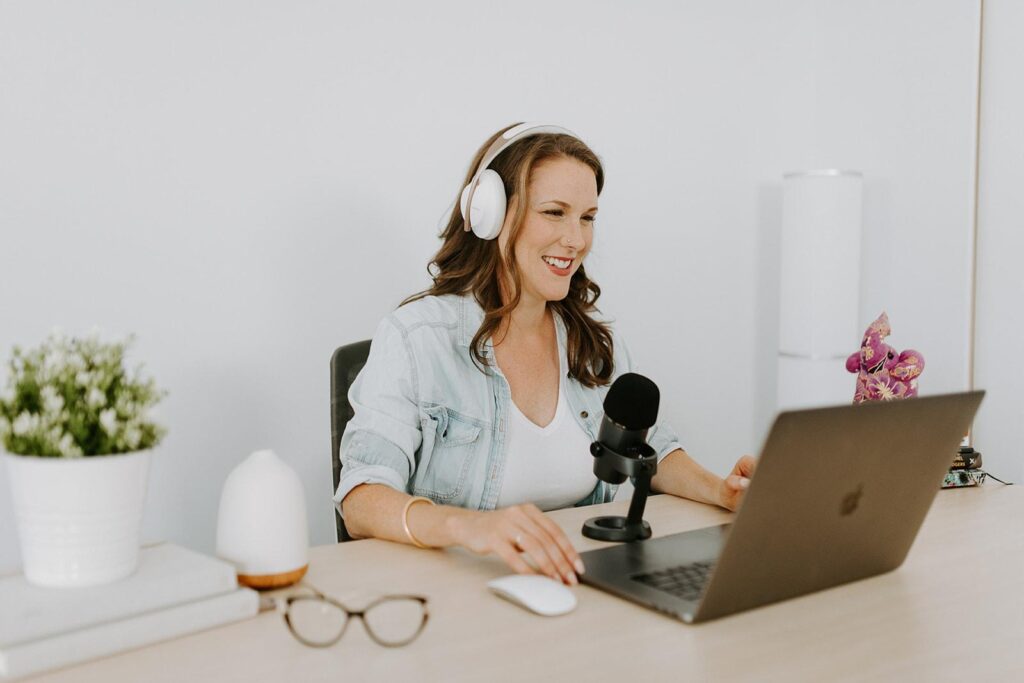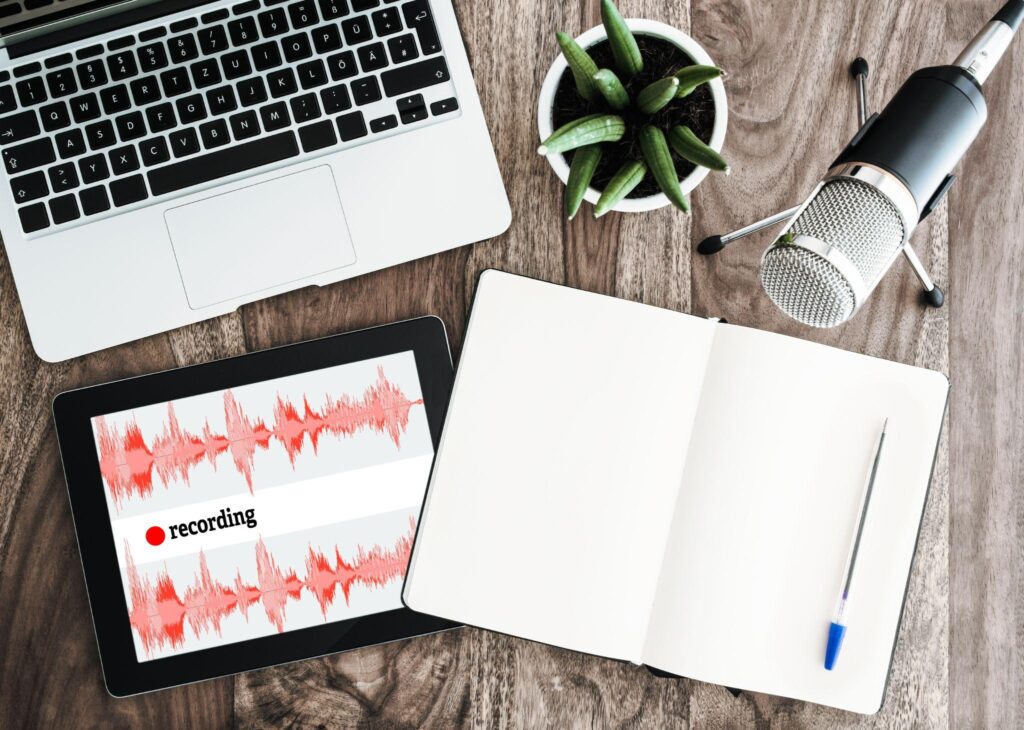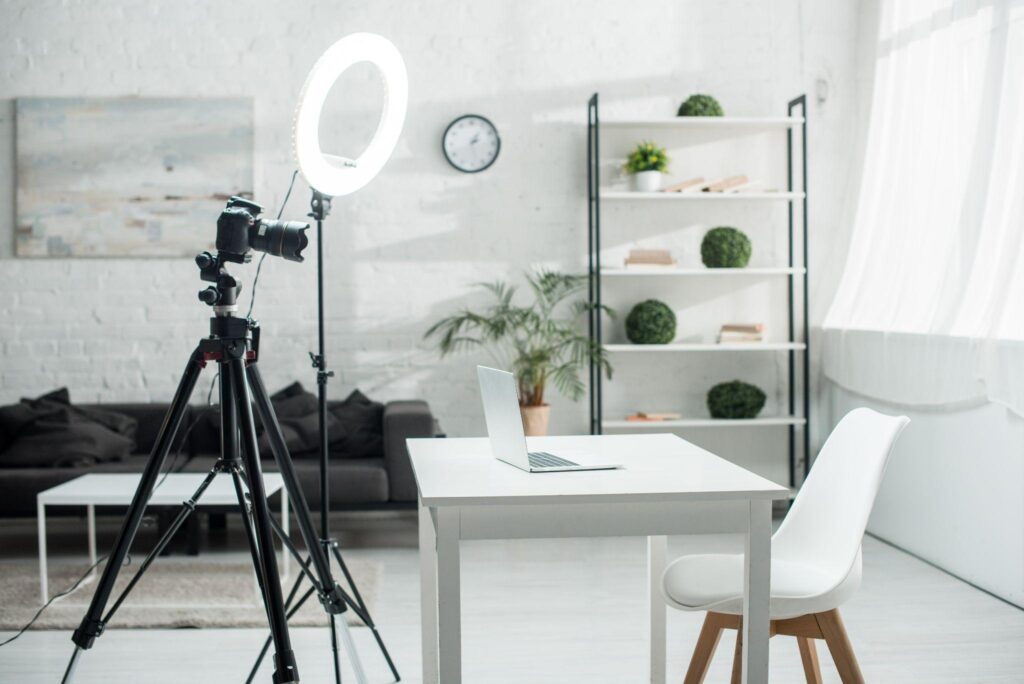If you’re an online business owner—or if you’re planning to start an online business in the new year (go, you!)—the absolute BEST FREE organic way to build an audience of ideal customers who truly WANT what you have to offer is through content creation.
Creating consistent, valuable content is the BEST way to establish:
- expertise
- authority
- trust
But which platform should you choose? Should you start a blog? A podcast? A YouTube channel? All three? In this video, you’ll learn the pros and cons of starting each so that you can decide which is right for you.
(This post contains affiliate links, which means—at zero cost to you—I will earn a small commission if you click through and make a purchase. Thank you for your support!)
The Pros and Cons of Starting a Blog
The Pros of Blogging
It’s inexpensive. The startup costs for creating a blog are extremely low. There are some places you can blog for free but you can also purchase web hosting for as little as $6 a month.
It’s easy to get started. While creating consistent, quality, valuable content does take skill, you essentially only need a laptop to get started.

The Cons of Blogging
Blogs can take a long time to gain traction. In general, blogs don’t experience overnight success. It can sometimes take years for a consistently maintained blog to gain any significant traction (unless you’re an SEO wiz…see below). If writing isn’t your thing, the time commitment involved might be too much. Sure, you can hire writers to help you create content, but that can be a pricey additional cost.
You need to understand SEO. Unless you’ve got a good handle on search engine optimization (SEO)—or can pay someone to do it for you—the likelihood that potential customers will discover you through organic search traffic is very low. You need to know how to optimize your blog articles through SEO for your blog to be discovered.
It can be really, really hard to stand out against the competition. As of 2022 there are over 600 MILLION blogs out there! If you want to start a blog, you’ll really need to niche down as much as possible and stay on top of your SEO game to be discoverable.
The Pros and Cons of Starting a Podcast
The Pros of Podcasting
You can find quality podcasting equipment without breaking the bank. The main piece of equipment you’ll need to start a podcast is a high-quality microphone. Luckily, there are plenty of good quality mics out there that aren’t expensive. For example, a Yeti Nano (which is the first mic I ever bought) costs around $99.

You’ll also need recording software, but there are a couple great free options like Garageband and Audacity to choose from to get you started.
If you plan on doing remote interviews you’ll need software for that, too. You can use Zoom or a service like Squadcast, which is about $10 a month.
Finally, you’ll need to consider a podcast hosting platform (hosting audio files on your own site is a big no-no). Fortunately, there are plenty of free options these days, including:
Less competition. There’s a LOT less competition with podcasts compared to blogs and YouTube channels. While there are over 600 million blogs, the number of active podcasts is between 2.4 and 4 million, depending on which statistics you look at.
Podcast retention tends to be high. Another HUGE pro for podcasts is retention. Podcasts are portable, making them easy for people to consume while doing other things, such as:
- driving
- working out
- taking a walk
- cleaning the house
Additionally, because they are great for “on-the-go,” people are more likely to listen to entire episodes.
Relationship-building. Hearing your voice will help your audience start feeling like they know you personally faster than they would by reading your blog. This speeds up the process of establishing your “know-like-trust” factor with your audience.

The Cons of Podcasting
Low discoverability. It can be very difficult to gain traction with a podcast if you’re starting from scratch with absolutely no audience. Unlike blog posts and YouTube videos, which can be found more easily through search engines, you’ll likely need to embark on more of a grassroots relationship-building and marketing strategy to get the word out about your podcast.
Of course, if you do have a budding email list or social media following, you’ll already have a listenership at the ready and will probably gain traction faster than someone with no audience or social media followers.
Not easily monetized. With YouTube channels you can make money through Adsense once you’ve reached 1,000 subscribers and have garnered 4,000 hours of watch time. With podcasts you’re reliant on sponsors, and many sponsors pay based on the number of downloads a podcast has, and there’s usually a minimum requirement (often 1,000 downloads or more). Having said that, affiliate partnerships—promoting a company’s products and receiving a commission based on sales—can be an option to monetize your podcast.
The Pros and Cons of Starting a YouTube Channel
The Pros of Starting a YouTube Channel
If you haven’t already guessed, creating visual content on YouTube is my preferred form of content (no surprise there!). Here are a few reasons I love creating videos on YouTube.
You can find quality equipment without breaking the bank. Much like recording podcast episodes, recording YouTube videos doesn’t require a lot of fancy, expensive equipment.
You’ll essentially need:
- a mic
- camera
- editing software
When I first started, I simply plunked my laptop in front of a window for some decent light and used my laptop’s built-in camera and microphone. I didn’t spend a dime. Even if you don’t even have a computer, you can literally start a channel right now with just your phone.
After a few months of creating videos on YouTube, I invested in a Yeti Nano microphone. Then, almost a year after that, I bought a ring light to help provide me with better lighting. It was only recently (after about 3 years of being on YouTube) that I purchased a DSLR camera.
Discoverability. YouTube is a search engine, meaning that your videos are much more discoverable than if they were podcasts. When someone types something into YouTube’s search bar your video has a chance of popping up in the search results if it’s related to the search term. The more people who watch your video content, the more YouTube will serve up your video to viewers.
A long shelf life. Content on YouTube also has a really long shelf life. I have three-year-old videos that are still getting hundreds, if not thousands, of views on a regular basis. When a person watches my videos, YouTube pushes my related videos into their suggestions, increasing the odds that person will watch even more of my videos.
Easy to monetize. YouTube is the easiest platform to monetize, so it can quickly become an additional stream of revenue once you’ve surpassed 1,000 subscribers and 4,000 hours of watchtime.
Relationship-building. When viewers watch you on video, they’ll start to feel like they know you personally faster than they would by reading your blog or even listening to your voice on a podcast. This helps establish your “know-like-trust” factor with your audience a lot faster than with other platforms.
Easy to repurpose. Video is the easiest type of content to repurpose. For example, from each long-form video you create you can extract the audio and publish it as a podcast, chop up the video to use as Reels, TikToks, or YouTube Shorts, and use the transcription as the basis for a blog post.

The Cons of Starting a YouTube Channel
It’s a lot of work. Youtube definitely takes the most work. You need to write scripts, record, edit, and upload the videos, create the thumbnails, write the descriptions, and answer comments. This can take a lot of time, which can limit the amount of content you’re able to create on a regular basis.
High competition. YouTube channels are much more competitive than podcasts. Over 100 million YouTube channels exist, compared with 2 to 4 million podcasts. You’ll need to produce consistent, high-quality content to get and keep watchers’ attention in such a crowded space.
Lower retention. Retention isn’t nearly as high with videos as it is with podcasts. While most people listen to podcasts in full, if a person watches 50% of one of your YouTube videos you’re doing pretty well.
So, Which Platform Is Right For You?
Blogs are best for those who:
- love writing and whose content is niched down quite far
- have a good handle on SEO or have the resources to hire someone who does
- have an audience who reads blogs
A podcast is best for those who:
- REALLY don’t want to be on camera. I want to point out here that MOST people are uncomfortable on camera to start off with, so this shouldn’t be a fear that holds you back. You can check out my video, “How to Overcome The Fear of Starting a YouTube Channel” to help you.
- have less time for content creation than a YouTube channel requires
- already have an audience built up from a pre-existing blog or a social media following
A YouTube Channel is best for those who:
- are starting from scratch with absolutely zero audience
- want to grow their audience more quickly
- want to build faster and deeper relationships with their audience
- would benefit from the visual aid that video provides
- want to be able to easily repurpose their content across multiple platforms
Which Type of Content Should I Start With?
Before deciding which platform to begin with, ask yourself these three questions:
- What are your strengths and what do you actually want to be doing? You’ll need to commit to your choice if you want to see results, so be sure it’s something that you know you’ll enjoy over the long term. If you hate making videos you won’t stick with a YouTube channel, and if you hate writing you won’t stick with a blog.
- Where are your ideal customers? You want to be where they are, so if your ideal customers don’t read blogs, a blog won’t get you very far. If they consume a lot of content on YouTube or they listen to a lot of podcasts, then that’s the best place to connect with them.
- What medium lends itself best to your content? For example, I offer a lot of tutorials on my channel, so it’s important for me to use a visual medium to get my points across. A podcast just wouldn’t allow me to offer all the how-to tutorials I like to create.
One parting word of advice: don’t try launching a blog, podcast, and YouTube channel all at once! This is a recipe for burnout and you’ll be spread so thin that you likely won’t gain any traction on any of them. Start with one, get it going, and once it’s successful add another if you think that doing so will really benefit your business.
And remember that a YouTube channel is the best platform to start out with if repurposing your content for other platforms is important to you.
If you’re an aspiring online entrepreneur and you feel like you could use a little help mapping out your first steps, download my free guide, The 4 Step No Time to Waste Online Business Start Up Blueprint.
You’re also invited to join my free Facebook group, Rachel’s Sandbox.
